200 Years of Huntley & Palmers in Reading: about the exhibition
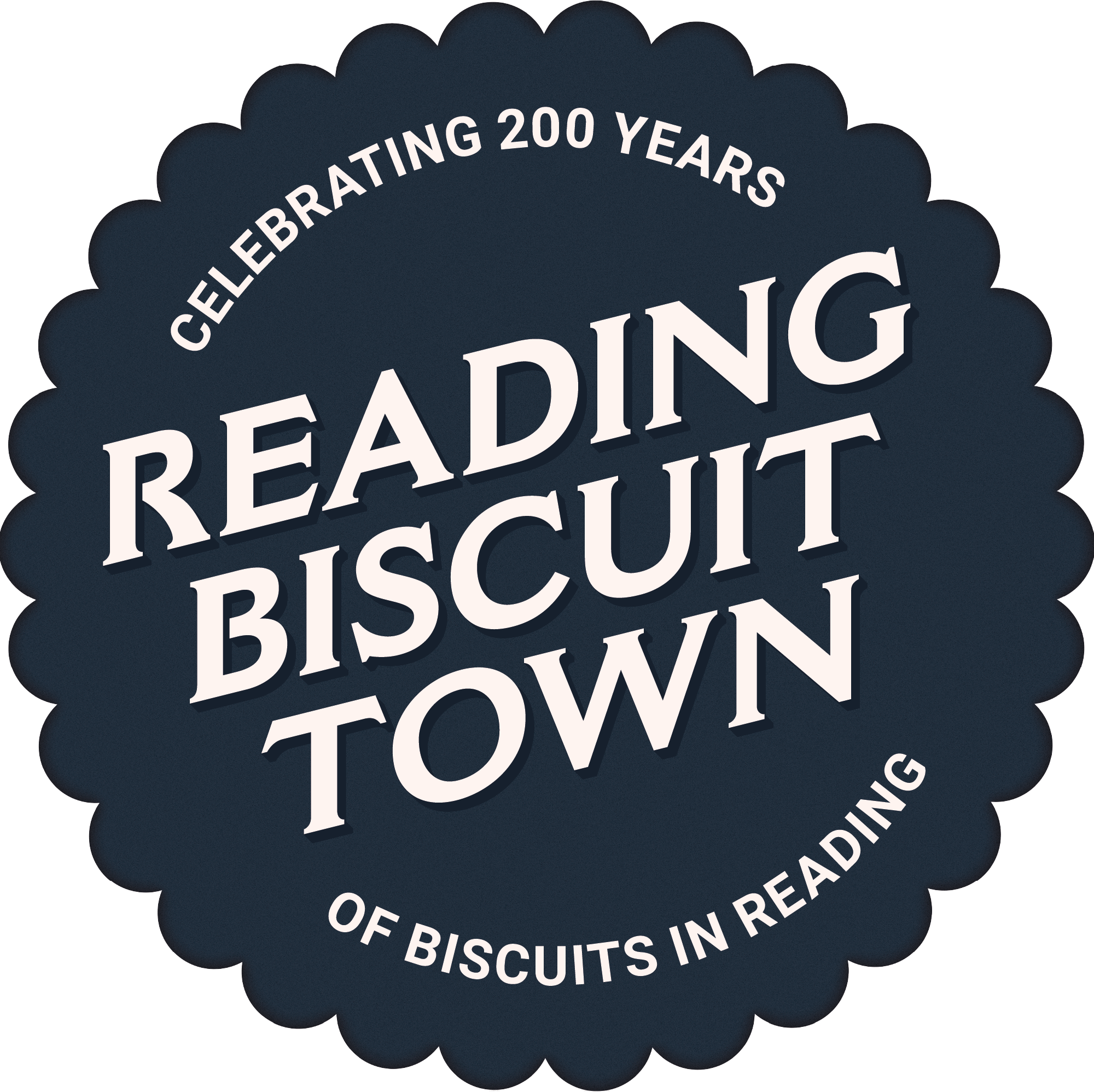 A generational knowledge gap exists within the people of Reading. Many younger people in the town have never heard of Huntley & Palmers, the biscuit company which was once the largest in the world, and provided Reading with much of its culture and identity. The company declined steadily throughout the 20th century, and ceased making biscuits in our town in the 1970s.
A generational knowledge gap exists within the people of Reading. Many younger people in the town have never heard of Huntley & Palmers, the biscuit company which was once the largest in the world, and provided Reading with much of its culture and identity. The company declined steadily throughout the 20th century, and ceased making biscuits in our town in the 1970s.
Almost everyone who lived in the town before this point has some memory of Reading biscuits. The excitement of picking up broken bakes on a Friday afternoon. The smell of freshly baked produce which pervaded the streets along with the scent of beer. And the sight of the company’s magnificent tins, which their parents may have kept as ornaments.
Our exhibition, Biscuit Town: 200 Years of Huntley & Palmers, displayed in The MERL’s staircase hall as part of Museums Partnership Reading, sought to both encourage this reminiscence and inform a new generation of just how important Huntley & Palmers was to Reading’s history.
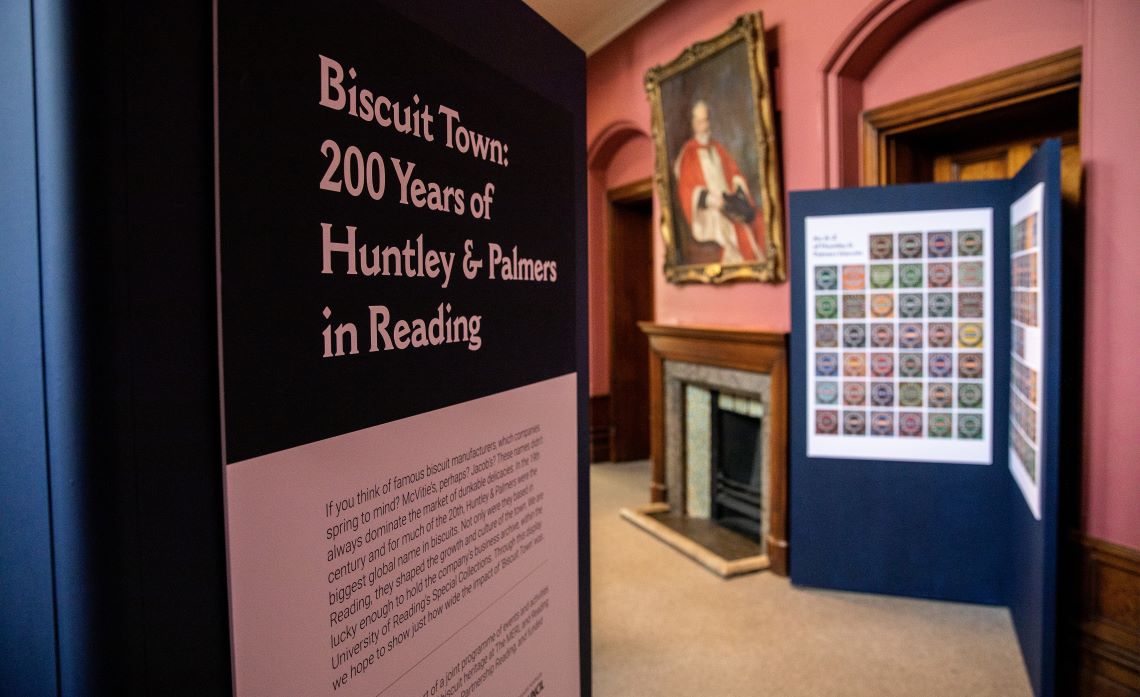
Commissioned as part of a series of events celebrating 200 years of Reading being the ‘Biscuit Town’, our exhibition places a particular emphasis on personal stories. Whilst the company’s business archives (held within the University’s Special Collections) are fascinating in their own right, we believe they are even more engaging when used to illustrate the lives and stories of real people. This thinking was based on the success of Queer Constellations, an exhibition last year which highlighted historical and current LGBTQ+ rural lives. It is my personal philosophy that people are more interesting than things, for what are archives and objects but the footprints left by the people who used and created them?
Untold stories – across Reading and the world
Although Huntley & Palmers was established as a small bakery in 1822 on Reading’s London Street (a five-minute walk from The MERL’s gates), the company rose in stature significantly after building and opening a factory on the King’s Road in 1846. The prospect of work in the factory attracted hundreds of people to Reading, and was instrumental to the growth of the town throughout the 19th century.
The first of our personal stories highlights the allure of a career in biscuits. Henry Gibbs, who was just fourteen years old, moved from Oxfordshire to Reading in 1861 to seek employment within the biscuit factory. He had no family in Reading and was mostly independent as he sought a home in which to lodge. By 1894, 9% of the town’s population were people like Henry, counting among the enormous numbers of Huntley & Palmers’ staff. His story also shows how collections can complement each other. I originally found Henry via census records, and confirmed his position within the company by using a wages ledger from the company archives. This ledger is on display in the exhibition.
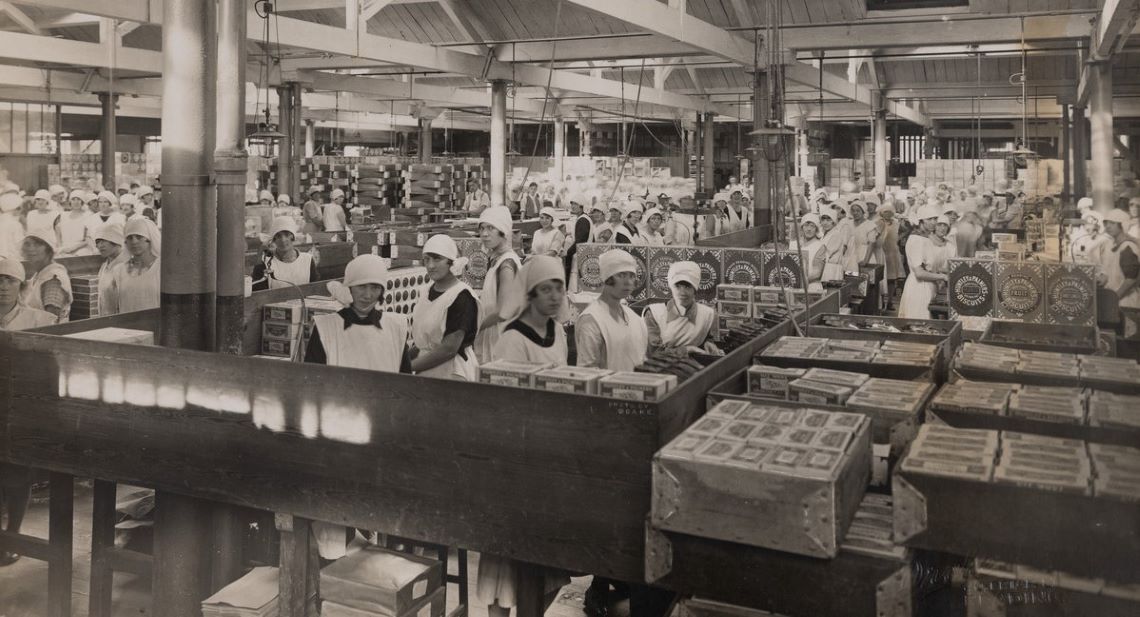
In some instances, the absence of records needed to tell personal stories is in itself a story worth telling. A good example of this is the challenge of finding people who used Huntley & Palmers products overseas, or worked for the company to procure foreign ingredients. It’s important to acknowledge that Huntley & Palmers took advantage of commercial colonialism, advertising their product towards colonisers seeking familiar British food. They used Britain’s influence within colonised countries to procure experimental ingredients for biscuit recipes, such as spices and coconuts. Unfortunately, the archives do not contain any references to the names of the colonised workers who supplied these items. We know that in Uganda, local people used Huntley & Palmers’ tins to store and protect bibles. However, British foreign office records very rarely name colonised people either, preferring to keep records on European occupiers such as missionaries. As a result of this, the personal story we highlighted was that of the unnamed, whom history did not record in writing but must not be forgotten nonetheless.
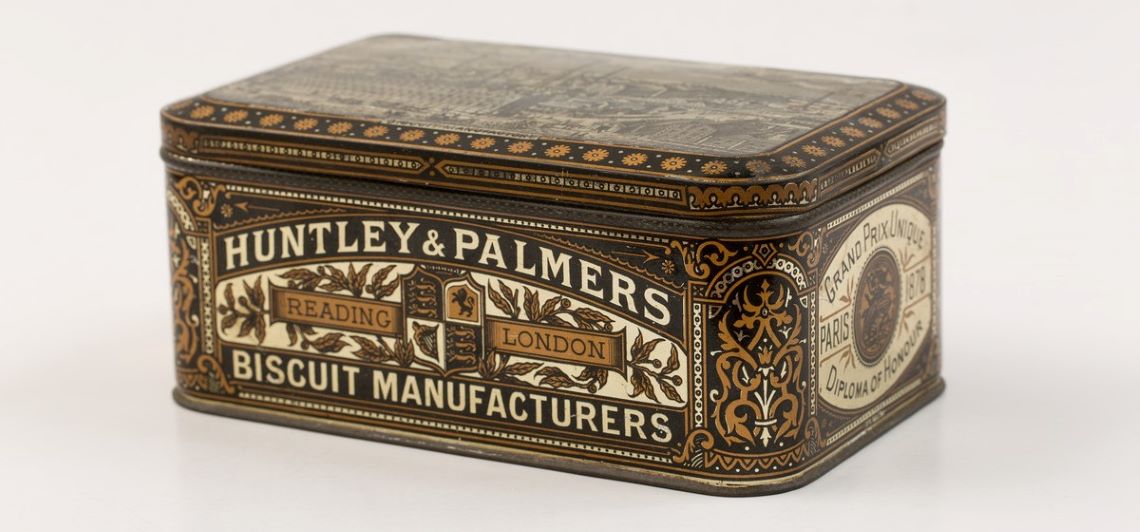
The exhibition does not just relate the tales of those linked to the firm’s biscuit production. Notably, The MERL building was once owned by Alfred Palmer, the head of the engineering department. By investigating various online sources, I tracked down Jan Brown, the great granddaughter of George Watson, who was Alfred Palmer’s gardener in the 1880s. Watson and his family lived on the premises, in outbuildings which have since been replaced by The MERL galleries. He kept two greenhouses, at least one summer house and a number of flower arrangements. Within the exhibition we have represented George with a number of gardening tools from The MERL object collections, but his legacy can also be experienced by walking around our garden. The earth is the very same he would have handled nearly 150 years ago. George, perhaps more than anyone else in the exhibition, demonstrates how Huntley & Palmers touched the lives of everyone in Reading.
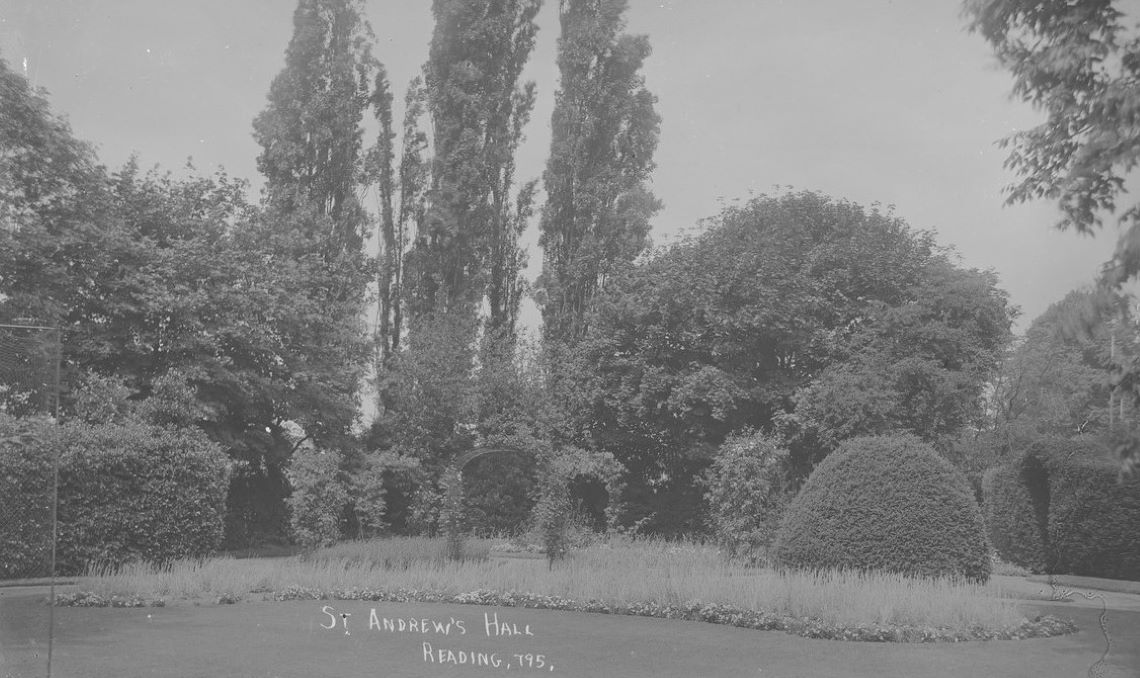
Huntley & Palmers’ escape from occupied France
War is the origin of stories both tragic and compelling, and we feature one personal wartime story within the exhibition.
In 1940, Reginald Wilde was working in Huntley & Palmers’ Paris factory. His wife and children had relocated to La Baule on the French west coast. When it became increasingly obvious that the French capital was going to fall to the advancing Axis forces, the directors of Huntley & Palmers in England ordered Reginald to evacuate the factory workers. However, he was not provided with transport, funds, or any other form of material support. He was on his own, with an enormous task.
Showing remarkable composure, Reginald gathered the factory staff and their families into a convoy. He ensured that all the essentials were covered, relating that:
‘At 1:30pm the vans and private cars and staff were collected together, and biscuit and cake were placed in one van, and a drum of petrol and a first aid kit in another van’.
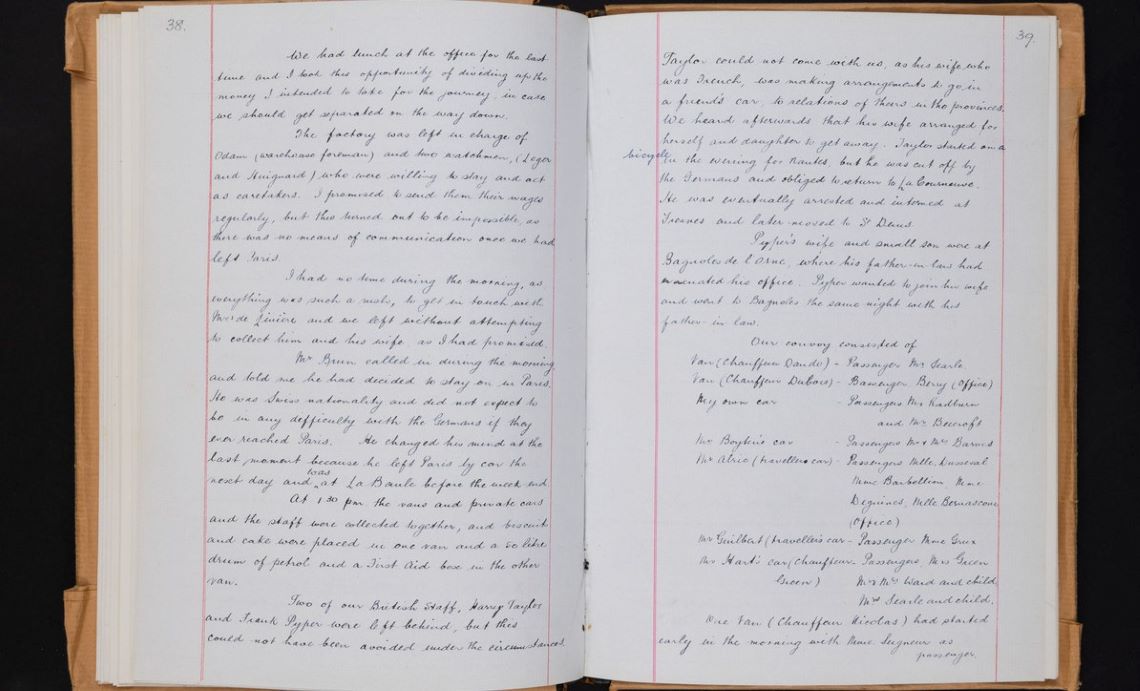
The convoy’s journey to the French coast was fraught with danger. The rapid Blitzkrieg of the German forces ensured the invaders were only ever a few days behind. Thousands of others were following the same route, with cars ‘three abreast, stretching for miles’. They passed countless cars that had been abandoned due to lack of petrol (a resource was in desperately short supply). To avoid the traffic, they used side roads which amounted to little more than cart tracks. And it was not only Huntley & Palmers’ head office who failed to offer support. Reginald visited the British Consulate in Nantes and ‘they were not a bit helpful’. He was forced to rely entirely on his own resourcefulness.
Meanwhile, in La Boule, Reginald’s wife Dorothy had heard nothing from her husband. Fearing for her children, she arranged passage to England on the RMS Lancastria. In the nick of time, Reginald arrived and prevented her from boarding. In doing so, he saved the life of his family, as the Lancastria was sunk just outside of port. It was the largest loss of life from a single ship sinking in British maritime history. Having narrowly avoided personal tragedy, Reginald accompanied the rest of the Huntley & Palmers staff back to England and safety. He received a letter of commendation from Cecil Palmer and wrote a full account of his escape. This account, recently acquired into our archives, is on display in the exhibition.
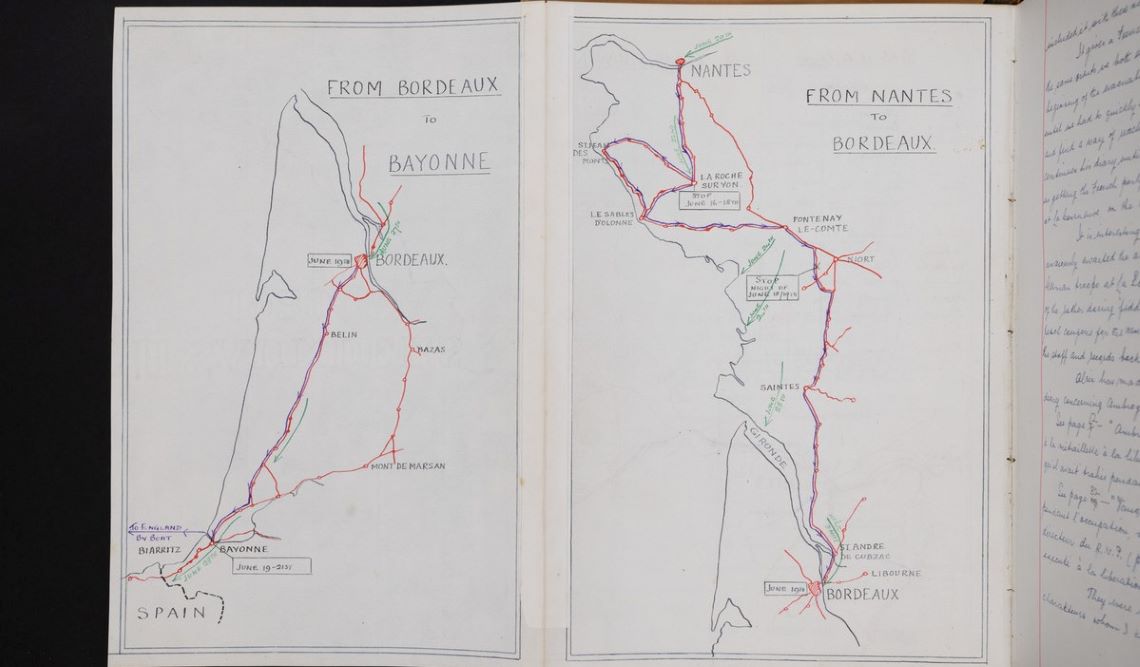
A biscuit-themed visit to The MERL
All of these stories and more can be discovered within our staircase hall display, alongside Huntley & Palmers materials now on show throughout the galleries both at The MERL and at Reading Museum, whose Huntley & Palmers Gallery displays almost 300 of the company’s beautifully ornate tins. In The MERL, many of the farming-related objects throughout the galleries have a link to biscuits and we felt this is something worth exploring. For example: milk had a poor reputation in Victorian England due to the challenges of keeping it both fresh and free from Bovine Tuberculosis. Baking it into a biscuit eliminated this risk, and allowed consumers to benefit from milk’s healthy properties.
In addition to objects on display, we have drawers which can be opened to reveal more about Huntley & Palmers history, including the origins of the company and rules within the factory. Apparently, cutting your toenails on company time was cause for suspension!
A further essential element to any Huntley & Palmers visit is a viewing of the Unsweetened film, on display in the gallery Our Country Lives gallery. The film explores life at the Huntley & Palmers factory at the start of the First World War. All of these gallery-based gems are signified by a vinyl on the floor, as well as knitted biscuits crafted by our wonderful volunteer Mewes Knitters.
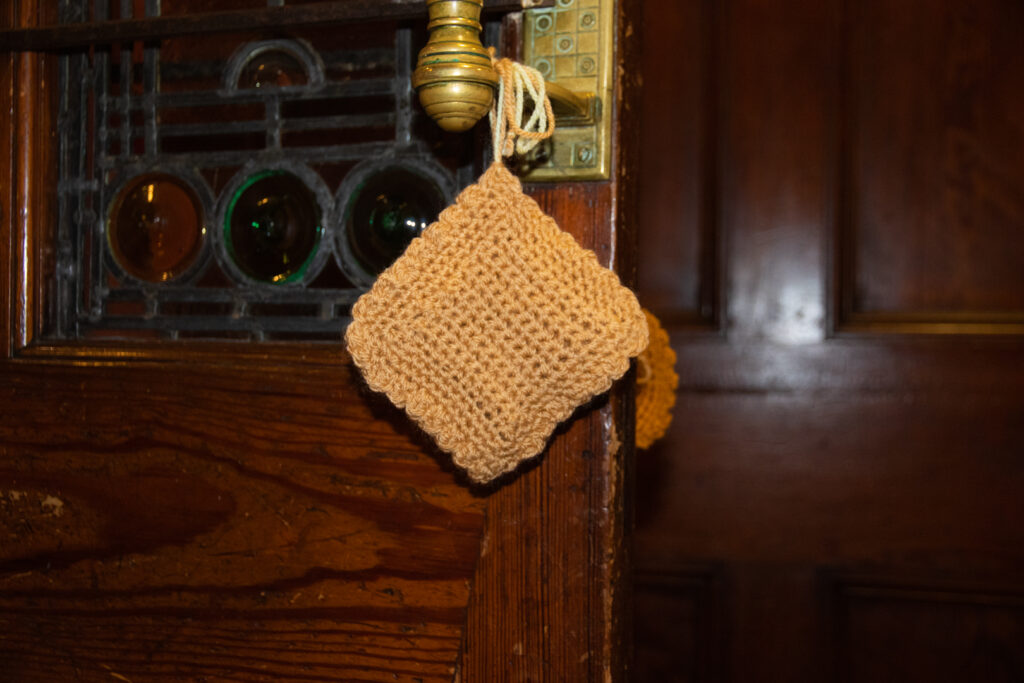
It’s easy, perhaps even logical, to think that if you’ve visited a museum once, you’ve seen all there is to see. But coming back to enjoy our commemorative Huntley & Palmers displays will provide a whole new experience. We hope to show the range of influence and cultural importance that Huntley & Palmers has had on real people, both in Reading and around the world. And who knows; perhaps somewhere in your family history, there lies a link to Biscuit Town, just waiting to be unwrapped.
Biscuit Town: 200 Years of Huntley & Palmers was on display at The MERL from the 10th May to 25th September 2022.
An online version of the exhibition is now available on the Special Collections website
One thought on “200 Years of Huntley & Palmers in Reading: about the exhibition”
Leave a Reply
You must be logged in to post a comment.

Really interesting stories. Looking forward to visiting!